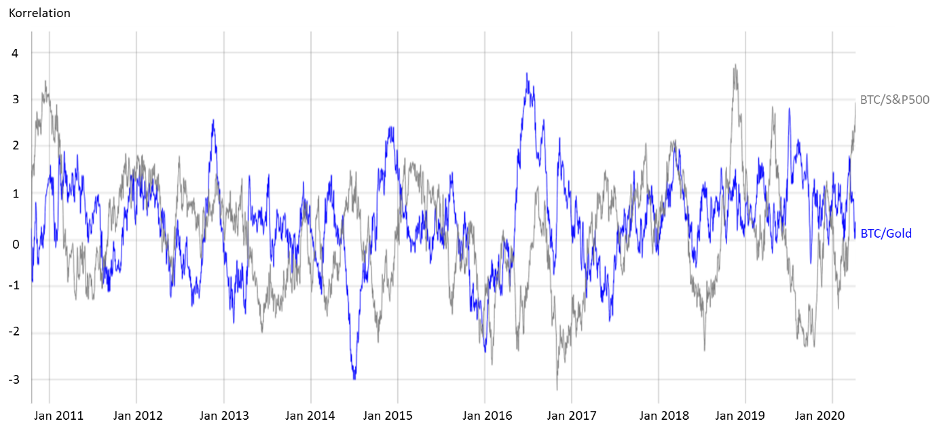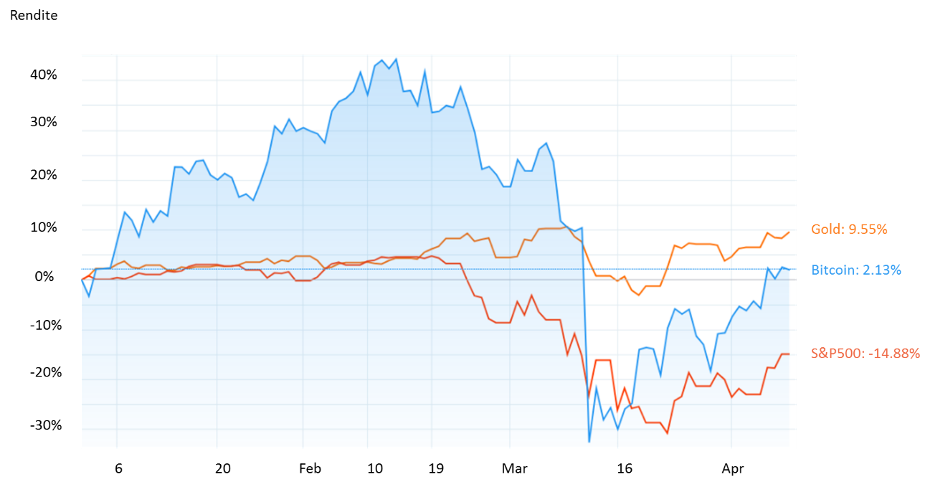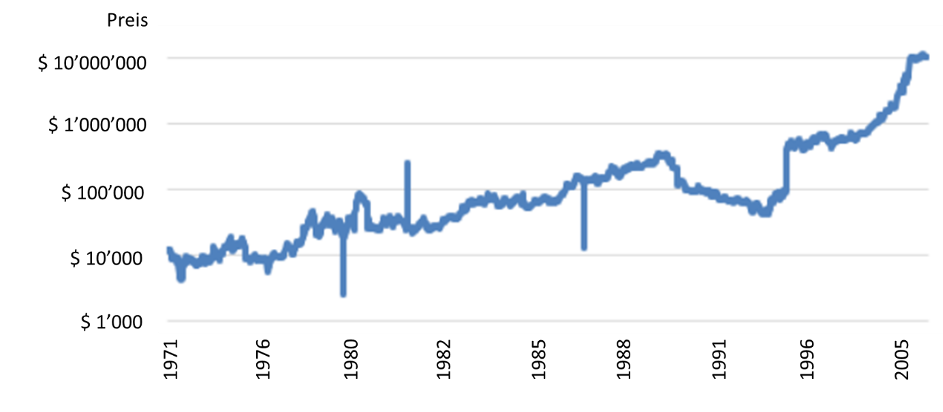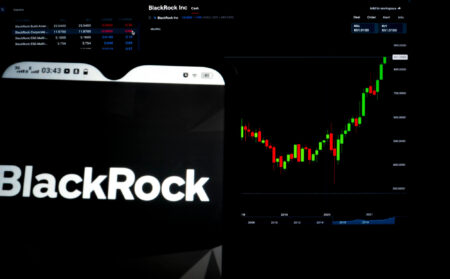In times of crisis, investors tend to flee to the safe haven of "cash". This behaviour affects most other asset classes. Crypto also experienced a fall in prices during the Corona crisis. In the medium term, however, the high independent component of crypto leads to a low correlation with traditional asset classes.
Alpha and beta are two important measures in portfolio theory which can also be applied to crypto. Alpha measures the project-specific return and Beta the market-dependent return. Crypto shows a high Beta in the short term. However, due to the high Alpha, there is hardly any correlation to other asset classes in the longer term.

Short-term "risk off" for all asset classes
In a shock-like crisis, the correlation is particularly high, as investors prefer safe and well-known “cash”, while selling off all other asset classes amid uncertainty. Margin calls reinforce this trend. The return dispersion only starts gradually. This also happened in the Corona crisis (Chart 2). The S&P500 has lost -14.8% since the beginning of the year, while Bitcoin is up despite a short-term fall.

Bitcoin is by far the largest crypto token as it captures 60% of the crypto market capitalization. There is a large number of other crypto tokens, also known as altcoins (alternative coins). These are new, younger projects and business models that are slowly moving up from the back rows. Altcoins can further improve the risk / return profile of a portfolio. However, since these projects are start-ups, the token selection is key. We assume that up to 80% of the projects will disappear over time.
Altcoins as salt in the soup of portfolio diversification
Altcoins are primarily cryptocurrencies that provide access to an ecosystem. These include smart contract platforms such as Ethereum and the decentralized applications based on them. Strong external partners such as Google, Amazon or Microsoft are increasingly being involved. Exchange tokens are interesting as well because owning them reduces the trading fees. A limited number of tokens leads to scarcity. The concept is comparable to a membership in the ring, as traditional exchanges used to have it. Because space was limited, the price of a front row seat on the Nymex (Future Oil Trading Exchange) rose from $10,000 to $10,000,000 between 1971 and 2008.

Conclusion: Crypto was no safe haven in the Corona crisis in the short term. In the medium term, however, there is no correlation to traditional investments such as gold or stocks. The trick is to identify high quality crypto projects and to integrate them into the portfolio. Adding this combination of low correlation and high Alpha to a portfolio significantly improves its risk / return profile.




